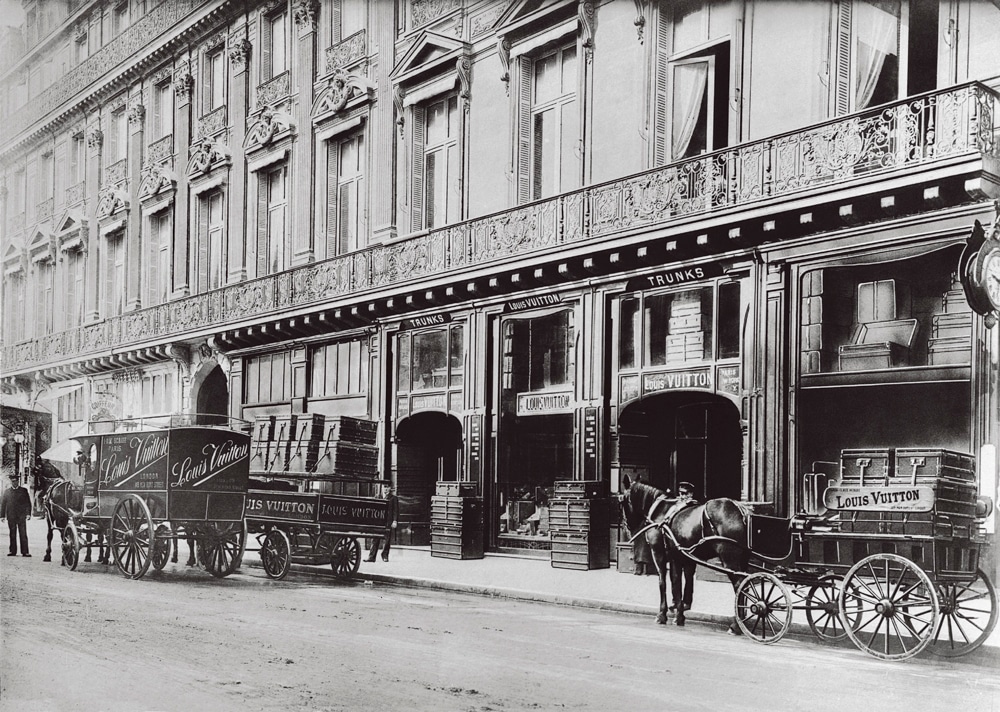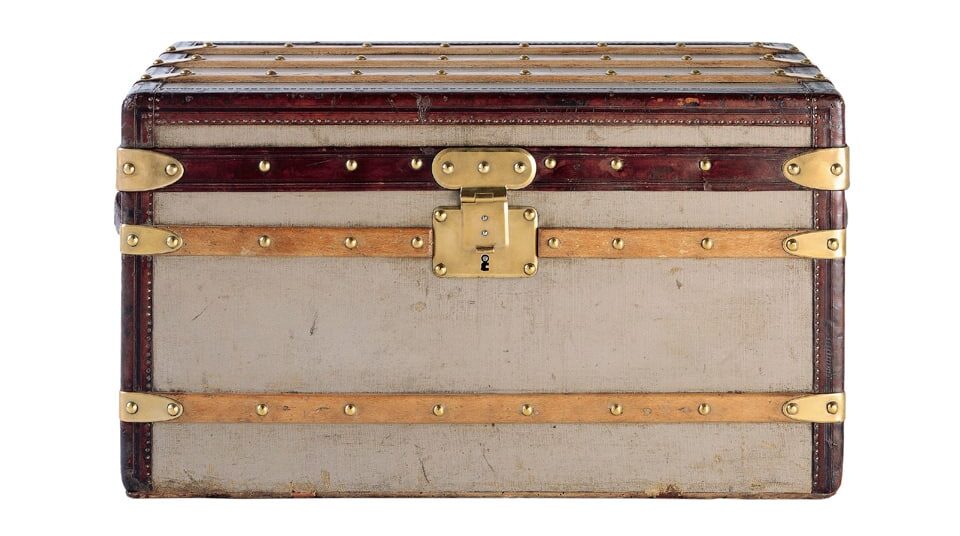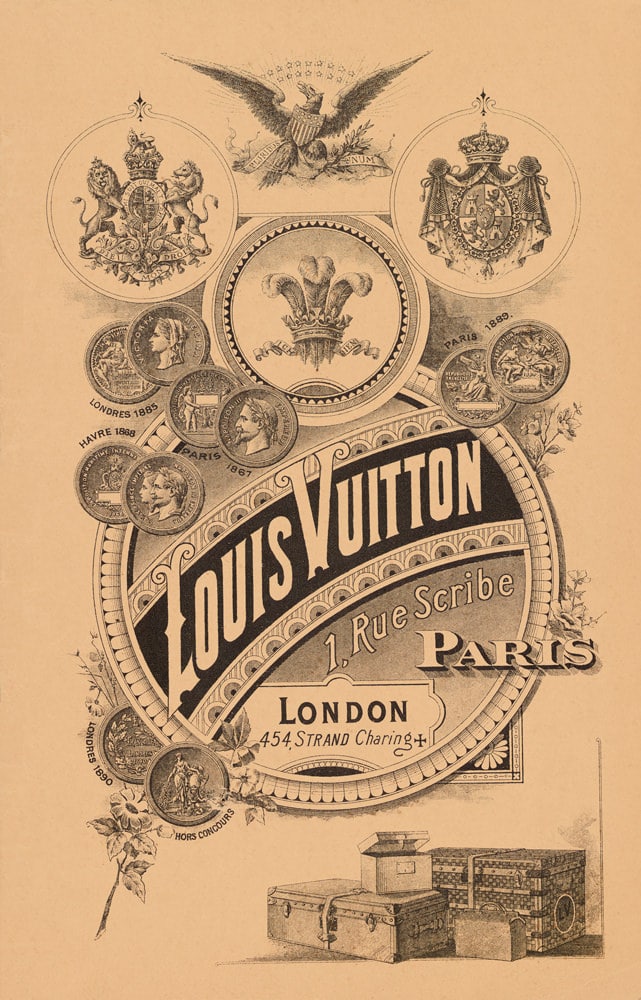Louis Vuitton is known worldwide for its ubiquitous Monogram canvas and classic handbags such as the iconic Speedy, Alma, Noé and more. But most handbag lovers know that the brand’s storied history began with its travel goods.
This year, Monsieur Louis Vuitton himself would have been 200. In celebration of Vuitton’s 200th birthday, we’re looking back at the brand’s humble beginnings and highlighting the evolution of its travel pieces, which are at the core of its DNA.
The Early Days of Louis Vuitton Trunks
Louis Vuitton was born in 1821 in Anchay, France, which is not far from the border of Switzerland. Vuitton left home when he was just 13 years old, reaching Paris two years later on foot, where he then apprenticed with a renowned trunk maker for 17 years before he founded his own Maison in 1854 at 4 Rue Neuve-des-Capucines.

Louis Vuitton had many connections within the Parisian Haute Couture world, and he could identify and understand the revolution in the world of travel. He was able to foresee a need for products to take people from place to place and thus, the visionary that is Louis Vuitton completely reinvented fashion packing, inventing Gris Trianon, more commonly known as coated canvas.
This new material made luggage waterproof, becoming an early trademark for the house, earning the name ‘Vuittonite’. Soon after, the entrepreneur took a visionary leap by inventing the first-ever flat-topped trunk, allowing luggage to be easily stacked in a ship’s baggage car.
The Evolution

The Louis Vuitton effect was apparent from the brand’s beginning, and it was only a few short years after the House’s founding that Louis Vuitton began to outgrow his Parisian headquarters.
In 1859, the workshop was relocated to Asnières, a village northwest of Paris. The Asnières atelier is the core of the brand, and in over a century and a half, that very atelier has created a plethora of exceptional, made-to-order pieces. Key pieces and hard-sided luggage special orders are still created there to this very day, and it would be remiss not to mention the Asnières atelier when discussing the evolution of Vuitton and his trunks.
Following the move, a red-striped version of the brand’s renowned canvas was created in 1872, which paved the way for what we now know as the brand’s iconic Damier canvas. Damier was created in 1888, partially as a way to combat the highly imitated striped canvas.
Though the brand is now widely known for its Monogram, Monogram canvas was not copyrighted until 1896, when it was invented by Vuitton’s son Georges. The now-instantly recognizable canvas combined Louis Vuitton’s initials with abstract floral shapes.
What now seems commonplace in the handbag world was considered a radical move back then, as any initials typically seen on a trunk were usually the carrier’s own.

At the end of the 19th century, the brand created and began producing its first supple bags, many of which were the basis for the icons we know and love today. In fact, as early as 1906, the brand began producing trunks nearly identical to the same hard-sided versions still made. And from the refined, elegant constructions of the early aughts that were designed to hold dresses, suits or toiletries, an international powerhouse was formed.
Vuitton and Beyond
Forever an innovator and visionary, Louis Vuitton died in 1892, leaving behind an extraordinary legacy that is known and evolved to this day. He has passed on a priceless savoir-faire to future generations, which is seen in everything the brand does today.
Much like the brand’s beginnings, when Louis Vuitton anticipated the age of modern travel, and its ever-changing needs, collaborations and partnerships with iconic creative minds continue to push boundaries.

A Celebration: 200 Louis
In celebration of Vuitton’s 200th birthday, the House has unveiled 200 Louis, which tapped 200 visionaries to create celebratory windows worldwide in honor of Louis Vuitton’s birth.
The windows debuted on August 4th, and all began with a box measuring 50x50x100cm, an ode to the original trunk Louis developed in the 1850s. 200 Louis is meant to be a homage to the man behind the trunk, the most emblematic object from the House.
The box serves as a starting point for creativity and innovation, much like the humble beginnings of the House itself. From the box, each visionary was given free rein to explore their innovations and creativity, and the results can be seen worldwide. This collaborative project is meant to extend beyond Louis’ bicentennial, exploring the past while looking towards the future, keeping in mind the Maison’s iconic heritage.

All images courtesy of Louis Vuitton












